Plastic-waste – Hydrogen-fuel-cell 23-07-2022 - Arhive
Plastic-waste – Hydrogen-fuel-cell
-Nylon 6 plant-based : Geno News
Geno News: Reshaping $22B Nylon Industry; Major Milestone in Plant-Based Nylon Hi there, This week, sustainability leader Geno announced it has successfully completed demonstration scale production runs for plant-based nylon-6 with longtime collaborator Aquafil, making plant-based nylon one step closer to commercialization.
Here’s why it matters: Nylon is a $22B industry dependent upon petrochemicals to thrive, encompassing everything from apparel to automotive parts and carpets.
This marks a significant milestone in changing the way the world is made–from fossil-fuel based products to plant-based and sustainable. Plastic-waste – Hydrogen-fuel-cell
This will be the first demonstration scale production run for plant-based nylon The news is on the heels of a Geno and lululemon multi-year collaboration to bring bio-based materials into lululemon clothing.
Other milestones on Geno’s journey to make the world more sustainable include: $120M Unilver joint venture to develop palm oil alternatives Geno’s on track to reduce over 100 million tons of carbon with their plant-based materials Geno technology reduces GHG by up to 90% The full release can be found here and below.
–Victoria FOR IMMEDIATE RELEASE Geno and Aquafil begin pre-commercial production for plant-based nylon-6 A step closer towards commercialization to fulfill brand demands SAN DIEGO and ARCO, Italy, July 20, 2022
Sustainability leader Genomatica (Geno) alongside longtime collaborator Aquafil [ECNL:IM] successfully completed the first demonstration scale production runs for plant-based nylon-6.
The material is intended to reshape the $22B nylon industry, enabling brands to meet demand from consumers for sustainable everyday materials from apparel to automotive parts to carpets. Plastic-waste – Hydrogen-fuel-cell
Geno and Aquafil have produced the first several tons of plant-based nylon-6 building block caprolactam, have converted it to nylon-6 polymer and are now in the process of transforming it for evaluation in nylon applications — such as yarns for textile and carpet and engineering plastics as part of pre-commercial quantities from demonstration production taking place in Europe.
Geno and Aquafil produce first plant-based nylon-6 textile yarn. Geno and Aquafil start-up pre-commercial production of plant-based nylon intermediate at the new demonstration plant located at Aquafil Slovenia.
The companies have been collaborating to first produce pilot-scale quantities of plant-based nylon-6 and have now advanced to produce pre-commercial quantities at demonstration scale which will help determine the final design of future commercial plants. The material will go to leading global brands and their value chain partners who are eager to explore and develop renewable products, create showcase goods and test feedback with customers.
“Now, more than ever, global brands are taking action to incorporate sustainable materials into their products”,said Christophe Schilling, Geno CEO. “We’re working to build purposeful, traceable and transparent supply chains, in this case for nylon-6, with the goal to provide more sustainable products that consumers demand and material solutions that can help brands achieve their ESG goals.
“The world needs every possible approach put into action to make supply chains sustainable, and making bio-based nylon is an essential piece of that,\” said Giulio Bonazzi, Aquafil CEO. Plastic-waste – Hydrogen-fuel-cell
“Plant-based nylon can perfectly complement our approach to depolymerizing nylon products once they reach the end of their useful life.
Together, we share a vision to lead the transition to more sustainable materials which has driven our long-term collaboration.
” Plant-based nylon-6 is Geno’s third major product line on a path to commercialization. The company has executed high impact deals with a range of brands to accelerate the global commercialization of sustainable materials, with the potential to reduce greenhouse gas emissions by 100 million tons in upcoming years.
Recent milestones advancing the sustainable materials transition include: a collaboration with lululemon (NASDAQ: LULU) to bring plant-based materials into lululemon’s products, a production milestone with partner Covestro (OTCMKTS: COVTY) for plant-based HMD used in sustainable coatings, a partnership with Asahi Kasei (OTCMKTS: AHKSY) and a newly formed venture with Unilever (NASDAQ: UL) to commercialize and scale plant-based alternatives to feedstocks like palm oil or fossil fuels to make key ingredients used in everyday cleaning and personal care products.
About Genomatica (Geno) Geno is harnessing biology to remake everyday products and materials built by and for the planet. Plastic-waste – Hydrogen-fuel-cell
In response to the urgent climate crisis,Geno is developing and scaling sustainable materials derived from plant- or waste-based feedstocks instead of fossil fuels.
Geno’s technology, built over the last 20 years, now drives materials and ingredients in applications ranging from cosmetics, carpets, to home cleaners, apparel and more. To learn more, visit genomatica.com.
About Aquafil Founded in 1965, Aquafil is one of the main producers of nylon in Italy and worldwide. The Group is present in seven countries and in three different continents, with over 2,800 employees at 19 production sites located in Italy, Slovenia, United States, China, Croatia, Scotland, Thailand and Japan. Aquafil is a pioneer in the circular economy also thanks to the ECONYL® Regeneration System, an innovative and sustainable process able to create new products from waste and give life to an endless cycle. For more information, visit www.aquafil.com.
We thank Victoria Berryhill for this article.
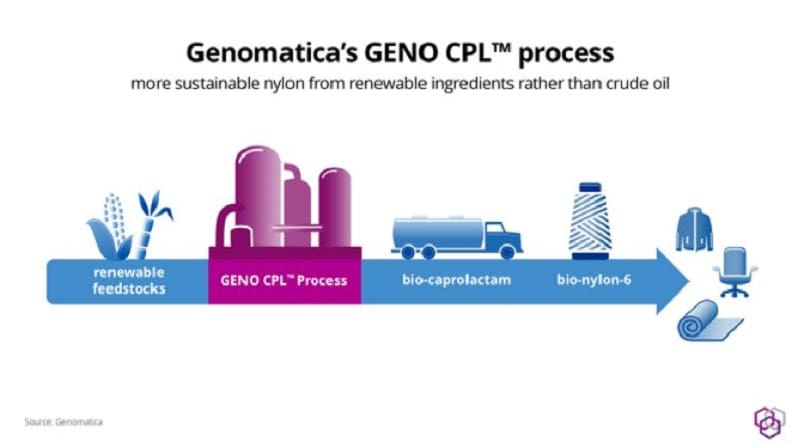
-Dow Goes Full Bore to Advance Circularity
Dow enters into global partnerships to build mechanical and advanced recycling infrastructures; aims to be largest consumer of recycled-plastic feedstock for polyethylene.
Dow today announced a full-court press to substantially expand its worldwide recycling ecosystem by helping to build a number of mechanical and advanced recycling facilities and using the post-consumer materials they generate in its products.
During the company’s second-quarter earnings call, Dow CEO Jim Fitterling discussed the investments, which are intended to divert more waste plastics from landfills and make Dow the largest consumer of recycled-plastic feedstock for polyethylene.
The three major initiatives are: Plastic-waste – Hydrogen-fuel-cell
- A collaboration with UK advanced recycling company Mura Technology to build multiple facilities across the United States and Europe and add up to 600 kilotons of advanced recycling capacity by 2030. Dow will be the primary consumer of the circular feed to come from each of the 120-kiloton facilities.
The project marks a significant scaleup of Mura’s HydroPRS (Hydrothermal Plastic Recycling Solution) advanced recycling process for all types of plastics, including flexible and multilayer materials deemed unrecyclable. Plastic-waste – Hydrogen-fuel-cell
The first plant to use the technology, in Teesside, UK, will feature a 20-kiloton-per-year production line and is set to begin operations next year.
“Mura’s technology is designed to champion a global circular plastics economy, and our partnership with Dow is a key enabler to bringing HydroPRS to every corner of the globe,” said Mura CEO Steve Mahon.
- A plan to build an advanced recycling facility in Dallas with Nexus Circular to process and convert more than 26,000 metric tons of hard-to-recycle plastic into a circular feedstock that Dow will use to create new plastics for health, hygiene, fitness, and food applications. Dow and Nexus have been partners in the Hefty EnergyBag program, which promotes reuse of hard-to-recycle plastics through residential curbside collection. This expansion of the partnership will build on the success of that program, which has diverted more than 1,800 tons of such plastics from landfills so far. Plastic-waste – Hydrogen-fuel-cell
“We now have an even greater opportunity to close the loop on Dow’s materials through the delivery of Nexus’ circular products back to our plants, further accelerating progress toward our 2030 goal to enable one million metric tons of plastic to be collected, reused, or recycled,” said Manav Lahoti, Global Sustainability Director for Hydrocarbons at Dow.
- An agreement to contribute to building a hybrid recycling facility in Damazan, France, with French recycling company Valoregen and to serve as the primary user of post-consumer recycled plastics from the 70-kiloton-a-year plant.
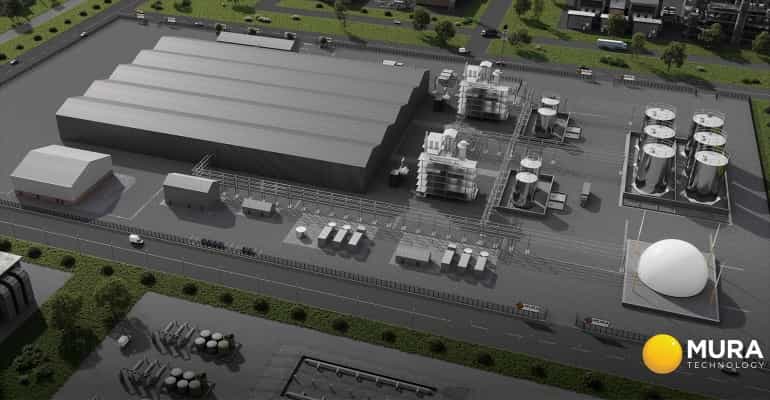
-Manufacturers of food packaging in Russia faced problems due to sanctions
Russian food packaging manufacturers have begun to change the type of packaging due to sanctions, RBC reports.
Russian manufacturers of consumer goods faced the need to change packaging this spring – in April, the EU, as part of the fifth package of sanctions, banned the import of printing ink, paper, cardboard, film, and printing machines to Russia. These materials for the printing industry, which are used for the production of packaging, were imported to Russia from abroad. Plastic-waste – Hydrogen-fuel-cell
So, in April it became known that Tetra Pak stopped supplying Russian manufacturers with packaging for national products – kefir and fermented baked milk. After some of the raw materials and packaging materials supplied to Russia fell under EU sanctions, the Russian Tetra Pak plant was cut off from these supplies. The parent company Tetra Pak asked the Swedish authorities to exclude these goods from sanctions, explaining this by humanitarian considerations, but was refused.
To stretch the paint supply until alternative suppliers are found, dairy and juice manufacturers have begun to develop temporary product packaging designs.
In May, the Volgograd manufacturer of juices and baby food “Sady Pridonya” announced that due to the shortage of cardboard, special varnishes and paints will produce products in minimalistic packaging. Plastic-waste – Hydrogen-fuel-cell
The transition to almost completely white packaging with a minimal design for dairy products and juices in early June was also warned by wimm-Bill-Dann, a pepsico corporation company (Chudo dairy products, Agusha baby food, J7 juices, Orchard, Favorite).
The new packaging is dominated by a white background, but recognizable elements of brands and designations that are required to be applied in accordance with the technical regulations are preserved. On some products, manufacturers put warning labels that the packaging looks unusual, but inside – the same products.
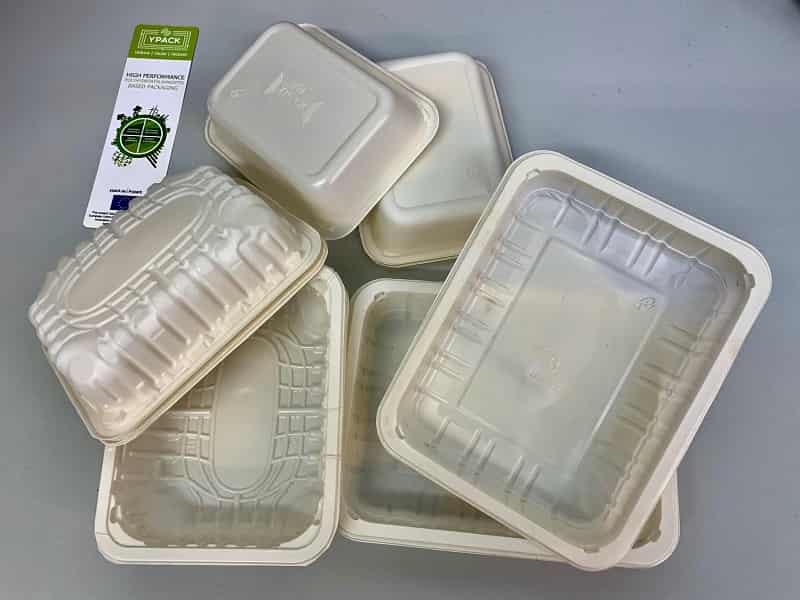
-Developing Asia GDP growth cut to 4.6% on China slowdown – ADB
The Asian Development Bank (ADB) on Thursday cut its GDP growth forecast for developing Asian countries to 4.6% from its previous projection of 5.2%, with China’s growth lowered by a full percentage point to 4.0%.
India’s growth was also projected to slow down, to 7.2% from 7.5% previously, the multilateral institution said in its Asian Development Outlook Supplement report, citing worsening economic conditions. Plastic-waste – Hydrogen-fuel-cell
For 2023, the GDP forecast for developing Asia was lowered to 5.2% from 5.3%, it said.
“With household demand hit by recent COVID-19 outbreaks, adding to the ongoing stress in the property market, the growth forecast for China is revised down by 1 percentage point to 4% in 2022,” the ADB said.
The growth forecast for China next year remains unchanged at 4.8% as carry-over effects from accelerating growth in the second half of this year will likely be dampened by fiscal consolidation efforts next year.
China’s “zero COVID” policy has led to strict curbs to choke outbreaks of the virus, most notably the two-month lockdown at its economic hub Shanghai which ended on 1 June.
The country is facing yet another surge in COVID-19 cases, fueled by Omicron sub-variants, with 826 cases recorded on 20 July, compared with the previous day’s 935 – the highest daily tally since 21 May. Plastic-waste – Hydrogen-fuel-cell
For southeast Asia, the 2022 GDP forecast was raised to 5.0% from 4.9% as domestic demand benefits from the continued lifting of COVID-19 mobility restrictions and the re-opening of borders in some economies in the subregion.
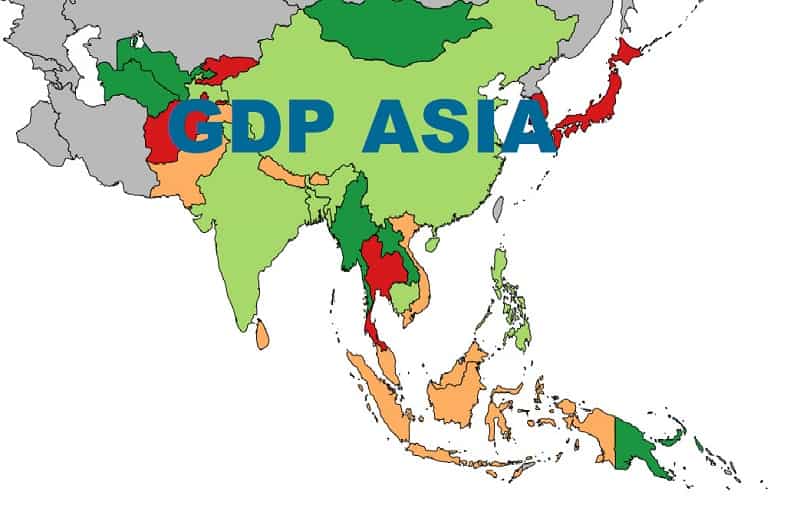
-Reducing plastic waste: Tips and reasons to diminish plastic use in daily life
Our food is wrapped in it, beauty products are stored in it, and many items are made from it – plastic is everywhere. The fact that plastic is part of so many aspects of our daily lives can make it seem impossible to avoid. Plastic-waste – Hydrogen-fuel-cell
But the truth is with eco-movements like zero waste and plastic-free living gaining momentum, there are more options than ever to reduce plastic products in your life. Add that to these seven reasons to reduce plastics and you will see why now is the time to transition to a lifestyle that uses less plastic.
Plastic pollution endangers wildlife
There is currently enough plastic in the ocean to circle the earth 400 times and that number is only increasing. A report by Science journal estimated that anywhere from five to 13 metric tons of plastic makes ends up in our oceans yearly. Marine animals are increasingly getting entangled in plastic waste and starve to death. Others mistake plastic for food. When animals mistake plastic for food, it fills their stomach, so they think they are full, which leads to death from stomach ruptures, obstructions, or malnutrition.
Plastic takes a long time to break down
Our World in Data reports that plastic can take up to 1000 years to break down. A plastic bottle and diapers take 450 years or more, while a plastic straw takes about 200 years. What about plastic bags? Anywhere from 10 to 1000 years, depending on the type of plastic and the landfill conditions.
Plastic isn’t biodegradable
This means that even when plastic breaks down, it doesn’t disappear – it just breaks into smaller pieces called microplastics. These microplastics pose a danger to marine life, our health, and our groundwater. Plastic-waste – Hydrogen-fuel-cell
Plastic contaminates our food
The average person consumes approximately a credit card worth of microplastic a week and many scientists believe this exposes us to harmful chemicals.
Plastic gets consumed through the animals we eat who have previously ingested plastic, food and drinks packaged in plastic, microwavable plastic containers, and more.
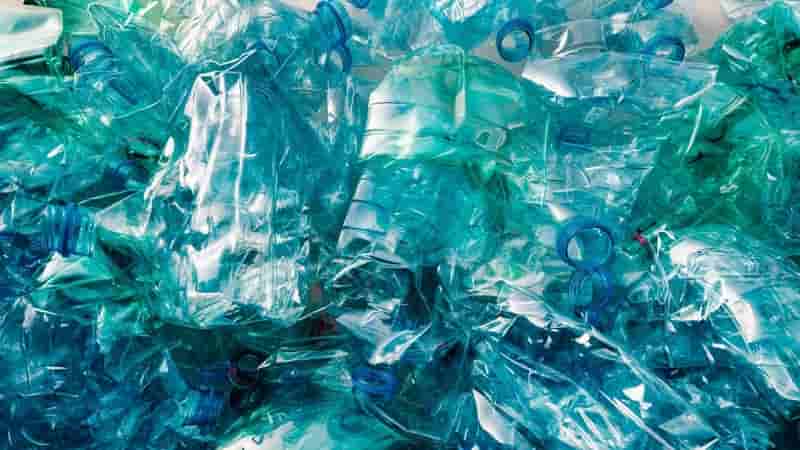
-BASF stabilizes recycled plastics used to protect pineapples from sunburn in Malaysia
BASF and 3T Industries Sdn Bhd, a leading recycling company in Malaysia dealing with post-industrial and post-consumer recyclates, are helping pineapple plantations in Malaysia to increase their yields and save resources, said the company.
For the first time, 3T Industries has applied BASF’s IrgaCycleTM UV033 DD to enhance 100% recycled high density polyethylene (HDPE) sheets used as protectors for pineapples. While pineapples require a warm and humid climate, they are susceptible to damage from solar radiation and high temperatures (> 32°C) which can significantly reduce marketable yield and cut deep into a grower’s profit. Symptoms include sunburn or bleaching which are visible as yellow-white skin that turns pale grey or brown upon damage to the tissue underneath. Plastic-waste – Hydrogen-fuel-cell
This damaged tissue is susceptible to disease and infestation. The HDPE protector shields the fruit from direct sunlight while still allowing photosynthesis to occur.
“Plastic additives specifically for the agricultural sector are highly customized to fulfil critical customer needs for enhanced crop protection solutions,” says Hermann Althoff, Senior Vice President, Performance Chemicals Asia Pacific. “We offer full customer support in all questions of quality improvement of recyclates to make them viable materials in new applications.” Previously, 3T Industries used a combination of antioxidants and light stabilizers to achieve the performance requirements stipulated by the grower – the HDPE protectors needed to last through the intended service lifetime of four seasons.
IrgaCycle offers a one-pack solution that is immediately available for the recycler without the need for further premixing. It is also more efficient at lower concentrations compared to traditional antioxidant systems and reduces the overall quantity of additives required. This results in easy and accurate dosing, improved product quality, as well as upgraded recyclate for use in long-term applications.
“We use our expertise in recycling technology and post-consumer resins to provide better solutions to consumers and communities,” says PH Tan, Managing Director of 3T Industries. “With IrgaCycle, we were able to use recycled feedstock to design a new product that features a high amount of recyclate content and makes more sustainable agricultural plastics possible.” Plastic-waste – Hydrogen-fuel-cell
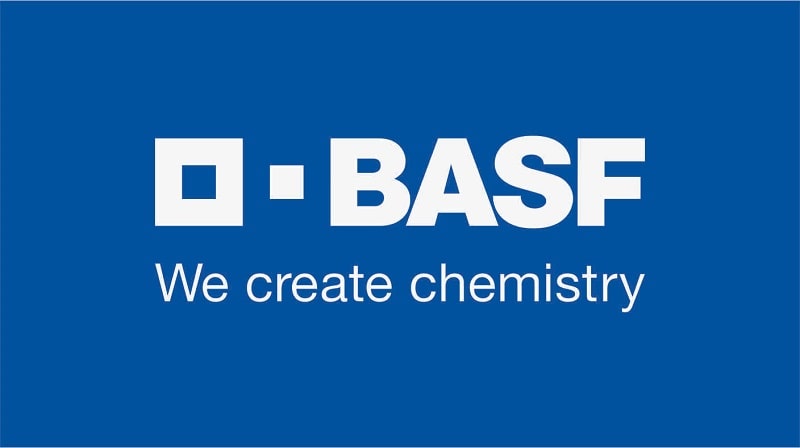
-Johnson Matthey announces UK investment to increase hydrogen fuel cell component production
Johnson Matthey (JM) has announced a plan to construct a facility at its Royston, UK, manufacturing site to produce components for hydrogen fuel cells on the back of projected increased demand, the UK-based firm said.
With an initial annual capacity of 3GW of proton exchange membrane (PEM) fuel cell components, the £80m investment is part of JM’s strategy to reach £200m sales in hydrogen technologies by 2024/25 and become the market leader for fuel cells and electrolysers. Plastic-waste – Hydrogen-fuel-cell
The UK government has announced their support of the hydrogen gigafactory’s upgrade through the Automotive Transformation Fund and Advanced Propulsion Centre (APC).
The APC has forecast that this will contribute towards the 14 gigawatts (GW) of fuel cell stack production estimated to be needed to meet local vehicle production demands by 2035.
The site will potentially be further expanded in the future, which could triple its capacity by using a decommissioned clean air production facility at the site.
The company began moving production of clean air catalysts out of its Royston facility, which was its most expensive site for the products, in its 2021 fiscal year, according to clean air finance director Alasdair Judge, speaking in February this year.
Increased fuel cell production from companies like JM will help towards producing more hydrogen fuel cell electric vehicles. These provide an option for decarbonising heavy-duty net zero vehicles and are thought to potentially stand as a key factor in achieving net zero targets.
“Decarbonising freight transportation is critical to help societies and industries meet their ambitious net zero emission targets – fuel cells will be a crucial part of the energy transition,” said JM chief Liam Condon.
The investment is also expected to provide and safeguard manufacturing jobs in the UK when it is expected to begin its operations in 2024.
These upgrades are set to put the UK in an improved position on the global fuel cell supply chain in coming years. Plastic-waste – Hydrogen-fuel-cell
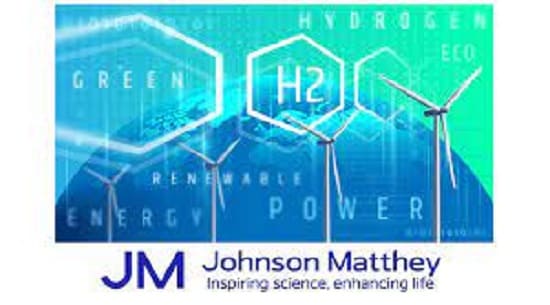
-Plastic Film Recycler Earns Recycling Partnership Grant
EFS-plastics in PA will use $200,000 grant from the Film and Flexibles Recycling Coalition to buy new equipment to increase film recycling by 50 million bags per month.
The Film and Flexibles Recycling Coalition within the The Recycling Partnership made its first film packaging capture grant to Environmentally Friendly Solutions, which is better known as EFS-plastics. The Canadian recycling company specializes in plastic film recycling. Plastic-waste – Hydrogen-fuel-cell
The $200,000 grant will pay for new equipment for the Hazleton, PA, facility. It will increase film recycling capacity by an additional 560,000 pounds per month — equivalent to more than 50 million plastic bags — and laying the groundwork to scale residential film and flexible plastics recycling.
EFS-plastics diverts 60,000,000 pounds per year from landfills from the 90,000 square-foot Hazleton plant and a 75,000 square-foot plant in Listowel, Ontario.
Just 1% of US households can recycle flexibles at home.
According to The Partnership’s Paying It Forward Report, significant investment is needed for film and flexible packaging to become widely accepted in residential collection and processing – just 1% of US households can recycle in their bin or cart today. With nearly 95 pounds of these materials found in each US home yearly — from grocery and storage bags to pouches and wrappers, system improvements to increase residential film and flexibles recycling are crucial to addressing the plastic waste crisis and saving more than 4 million tons from landfills each year.
Film packaging also offers a reduced carbon footprint compared to heavier packaging.
The Film and Flexibles Recycling Coalition, part of The Partnership’s Pathway to Circularity Initiative, is a broad group of industry stakeholders seeking to increase curbside collection of film recycling and support end markets for film and flexible products. The Coalition’s primary focus in 2022-2023 is proving efficient and effective collection through pilot projects as well as infrastructure and optimization grants, complementing The Partnership’s robust grant programs for communities and Materials Recovery Facilities (MRFs). Plastic-waste – Hydrogen-fuel-cell

-Hypetex Captures Funding for Its Colored Carbon-Fiber Composite
The company has developed a sustainable, water-based, low-energy process for coloring carbon-fiber composite materials, eliminating the need for painting.
Hypetex, the world’s first manufacturer of colored carbon fiber, has attracted £1.25 million ($1.5 million) in new equity investment and welcomes two experienced business leaders as both investors and advisers to the company. The investment is the latest round of Hypetex’s seed funding, led by 24Haymarket, which will support ambitious growth plans and help scale the business’s footprint. Plastic-waste – Hydrogen-fuel-cell
Hypetex’s technology enables the sustainable colorization of advanced materials while maintaining and often improving their performance properties. Using a water-based resin system and low-energy curing process, the finished colored carbon-fiber composite materials can be used in a range of products. Additional painting is eliminated, saving cost while improving aesthetics.
Applications range from consumer electronics, aerospace, yachting, and lifestyle products to automotive design and Formula One. Hypetex has been used in a number of successful programs recently, demonstrating the benefits of the
Hypetex sits well with Jaguar Land Rover concept car
Jaguar Land Rover collaborated with Hypetex to produce the unique seat design for its latest I-Pace concept car. The front two seats are freestanding and situated in a cab-forward position, making best use of the strong yet light Hypetex material. The silver carbon-fiber composite frames enable a ‘floating’ design with a central mount under each front seat, offering more room for passengers behind.

Plastic-waste – Hydrogen-fuel-cell
